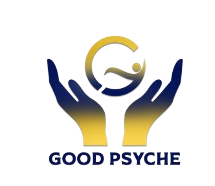Bipolar Disorder Meaning:
Bipolar disorder is a mood disorder characterized by the presence of episodes of significant disturbance in individual’s mood and activity level. Bipolar Disorder is marked by the presence of sustained mood disturbance in form of episodes of depression and mania/hypomania. Bipolar Disorder is distinguished from major depressive disorder by the presence of at least one episode of manic/hypomanic symptoms.
People having a manic episode may:
Feel very “up,” “high,” elated, or irritable or touchy
Feel “jumpy” or “wired”
Have a decreased need for sleep
Have a loss of appetite
Talk very fast about a lot of different things
Feel like their thoughts are racing
Think they can do a lot of things at once
Do risky things that show poor judgment, such as eat and drink excessively, spend or give away a lot of money, or have reckless sex
Feel like they are unusually important, talented, or powerful
People having a depressive episode may:
Feel very sad, “down,” empty, worried, or hopeless
Feel slowed down or restless
Have trouble falling asleep, wake up too early, or sleep too much
Experience increased appetite and weight gain
Talk very slowly, feel like they have nothing to say, forget a lot
Have trouble concentrating or making decisions
Feel unable to do even simple things
Have little interest in almost all activities, a decreased or absent sex drive, or an inability to experience pleasure (“anhedonia”)
Feel hopeless or worthless, think about death or suicide
Bipolar disorder can also be marked by the presence of a mixed episode. During a mixed episode the individual experiences alternation between manic and depressive symptoms. The two set of symptoms are present for maximum duration of the current episode of illness.
There are three types of bipolar disorder. All three types involve clear changes in mood, energy, and activity levels. These moods range from periods of extremely “up,” elated, irritable, or energized behavior (known as manic episodes) to very “down,” sad, indifferent, or hopeless periods (known as depressive episodes). Less severe manic periods are known as hypomanic episodes.
Bipolar I Disorder— defined by manic episodes that last at least 7 days, or by manic symptoms that are so severe that the person needs immediate hospital care. Usually, depressive episodes occur as well, typically lasting at least 2 weeks. Episodes of depression with mixed features (having depressive symptoms and manic symptoms at the same time) are also possible.
Bipolar II Disorder— defined by a pattern of depressive episodes and hypomanic episodes, but not the full-blown manic episodes that are typical of Bipolar I Disorder.
Cyclothymic Disorder (also called Cyclothymia)— defined by periods of hypomanic symptoms as well as periods of depressive symptoms lasting for at least 2 years (1 year in children and adolescents). However, the symptoms do not meet the diagnostic requirements for a hypomanic episode and a depressive episode.
Bipolar Disorder Treatment
- Psychotherapy in Bipolar Disorder:
TREATMENT BY COUNSELING/ PSYCHOTHERAPY
There are different types of therapy available that are chosen as per the patient’s symptoms.
- Cognitive-behavioral therapy (CBT) – Methods to learn to identify and modify thought patterns accompanying mood shifts.
- Interpersonal therapy (IPT) – Centers for resolving interpersonal problems and aiding recovery.
- Psychodynamic Therapy – Focused on revealing unconscious content of client’s psyche to alleviate psychic tension.
- Social Rhythm Therapy – To develop a normal sleep schedule and predictable daily routines.
- Social skills therapy – Training for social skills.
Medication for bipolar disorder:
Please consult our Psychiatrist for any support in Medication for Bipolar disorder

